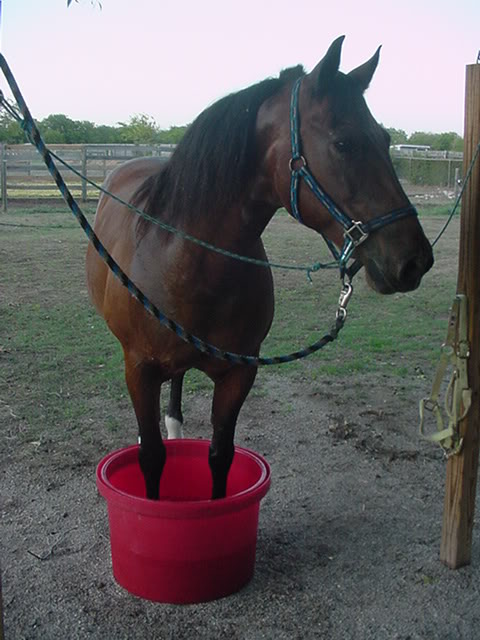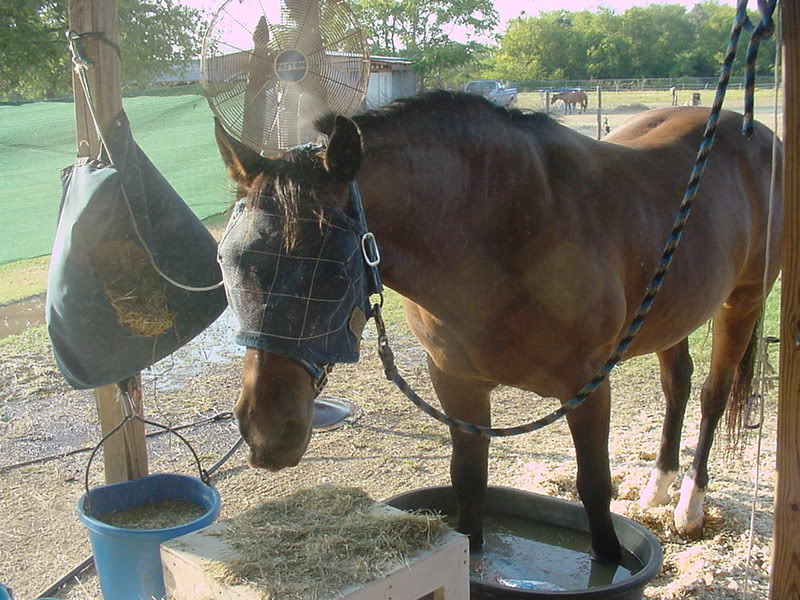A fellow boarder had the vet out Friday and was told her horse may be developing laminitis. Boarder was told to ice the front hooves. She didn’t get much in the way of instruction.
She came out Saturday and didn’t really know how to do this. Me either - no experience with this!
I helped her get the horse’s legs into a rubber feed tub (he was good about that). Added about an inch of water, and a bag of ice, then more water, and another bag. At this point, the water’s ice cold (as you can imagine) and the horse seemed a little uncomfortable with it.
In case I get to help with this again: how much ice water is needed? I know colder is probably better, but I was afraid if it was too deep, and too cold, the horse will try to get out, knock the whole thing over, etc. Do you have to submerge the entire hoof? Or even higher?
Hope there is some experience out there. BTW, it was 109 in Phoenix yesterday, so this is not a case of hypothermia risk, not at all.





 …
…